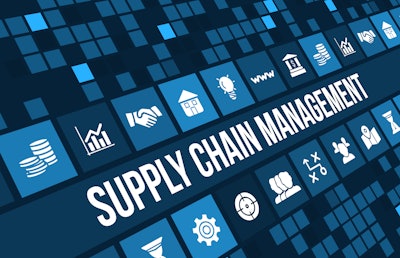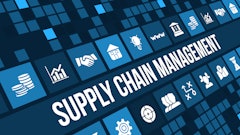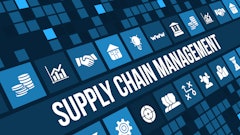
Most manufacturers and distributors have long been investing in software to sharpen performance, streamline operations, and keep pace with customer expectations. The question is no longer whether to adopt these tools and systems, but whether the ones already in place are delivering meaningful, timely insights. Too often, the answer is no.
Agile implementation approaches promise speed, and they deliver on it. Companies get to a “minimally viable” state quickly, with working dashboards and core functionality. But then the cycle repeats. Teams move on to the next shiny new project, and optimization — the stage where the real return is created — is deferred.
Part of this is cultural. Many organizations rely on a “SWAT team” for implementation, high-energy employees who thrive on change, enjoy firefighting, and feel fulfilled by the adrenaline of go-live. Once the crisis passes and the rollout stabilizes, these people move on. The support team that takes over is wired differently. Their job is to maintain stability, resolve issues, and close tickets. They are not incentivized to optimize; they are incentivized to keep things from breaking. And so the cycle stalls.
The opportunity is to move beyond stabilization. Software implementation cannot be treated as a finish line, but rather than the start of a journey toward continuous improvement. Optimization is where software begins to serve strategy, enabling decisions that are faster, better informed, and more closely aligned with organizational goals.
Why software alone isn’t enough
An ERP system is, to borrow from Eliyahu Goldratt, “necessary but not sufficient.” Out-of-the-box functionality may be usable, but it’s rarely optimal. Implementation accelerators can get a system up and running quickly, but they don’t address the harder, ongoing work of optimization.
That requires a steady-state environment and high-quality data. Without clean, consolidated, and contextualized data, executives are left with fragmented views, siloed dashboards, and manual reporting processes. Instead of accelerating decisions, the system becomes another bottleneck.
The point is not simply to automate tasks. It’s to elevate decision-making. And before AI can augment human intelligence, the underlying processes must be optimized. Otherwise, automation simply accelerates bad habits.
The 3 layers of optimization
Optimization is multi-layered work. It happens in three dimensions, each of which is critical to decision velocity:
- Operational optimization. Streamlining workflows, reducing redundancy, and eliminating manual steps that bog down execution.
- Data optimization. Consolidating and structuring data so it is accurate, accessible, and contextualized. This isn’t just a technical exercise for database administrators; it requires subject matter experts to interpret the information and executives to validate alignment with business goals.
- Decision optimization. Equipping managers and leaders with timely, actionable insights so they can make decisions that drive profitability, not just reports that confirm the past.
Consider a Canadian distributor for example, that relied on legacy systems and manual processes for decades. Their reporting was slow and disconnected, impairing the leadership team’s ability to manage dynamically. Once they optimized their reporting environment, results were dramatic. Reports that once took days or weeks were generated in hours. Inventory inefficiencies, vendor delays, and surplus stock — previously buried — became visible and correctable in real time.
That shift wasn’t just about accessing data more easily. It was about accelerating the pace of decisions. Decision velocity, not raw data access, was the true ROI of their optimization efforts.
Human-centered technology
Optimization must serve the people who use it. Tools should be intuitive enough for executives and front-line managers to use without data science credentials. Workflows should reduce friction, not add it.
From the C-suite setting strategic KPIs to the warehouse team managing daily transactions, everyone should be empowered to see exceptions, understand context, and act decisively. When technology is designed around users, optimization becomes self-sustaining.
Avoiding the “set it and forget it” trap
One of the most common missteps is treating optimization as a one-time milestone. Companies implement, stabilize, and stop. But optimization is not static — it’s a continuous discipline.
Markets change. Customer expectations shift. KPIs lose relevance. Data sets degrade. Without regular review and recalibration, systems that once delivered value can quietly become outdated. Leaders should be asking:
● Are our KPIs still aligned with strategy?
● Is our data still clean, accurate, and connected?
● Are users still engaged and empowered to use the tools?
The organizations that fail here don’t usually notice it right away. The drag on performance is quiet but compounding — until competitors with sharper decision velocity begin to outpace them.
What optimized companies do differently
The best-performing companies treat optimization as part of their culture, not a phase. They:
● Build flexible, scalable tech stacks that evolve with the business.
● Prioritize usability alongside power, so tools aren’t abandoned by users.
● Share accurate information broadly and quickly, highlighting exceptions early so corrective action can be taken in real time.
● Foster data-driven decision-making at every level, not just at the executive tier.
Their greatest improvements don’t come from annual reviews or quarterly reports. They come from daily decisions made better — and faster — because insights are immediate and trustworthy.
The ROI of speed-to-insight
In today’s manufacturing and distribution landscape, the return on software investment isn’t about how quickly you can implement. It’s about how quickly you can decide.
Optimization — operational, data, and decision — is what transforms systems from necessary infrastructure into strategic advantage. It equips leaders to adapt faster, align teams more effectively, and make decisions that directly improve margins.
The organizations that succeed are not those with the newest software or the flashiest dashboards. They are the ones that have committed to continuous optimization, where decision velocity is not an aspiration but a core capability. And in a competitive environment, that speed-to-insight is the ROI that matters most.















![Pros To Know 2026 [color]](https://img.sdcexec.com/mindful/acbm/workspaces/default/uploads/2025/08/prostoknow-2026-color.mduFvhpgMk.png?ar=16%3A9&auto=format%2Ccompress&bg=fff&fill-color=fff&fit=fill&h=135&q=70&w=240)


